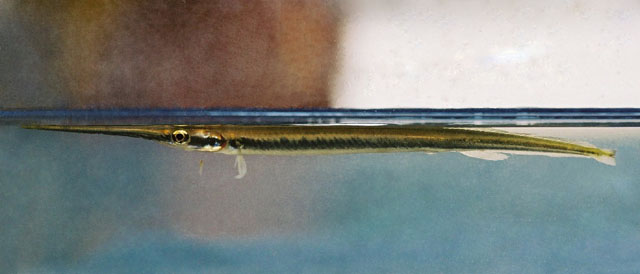| Belonidae (Needlefishes) |
| 29.1 cm TL (male/unsexed) |
|
pelagic; freshwater; depth range - 0 m |
| South America: Amazon and Orinoco River basins, and the Guianas. |
|
Dorsal spines (total): 0-0; Dorsal soft rays (total): 29-36; Anal spines: 0-0; Anal soft rays: 25-32; Vertebrae: 68-78. Predorsal scales 85-135, mean 110.3 (Ref. 10994, Table 7). |
| Forms schools at the surface. Prefers to inhabit marshes, small slow-moving creeks or even in main river beds, in the slowest parts of meandering streams next to banks (Ref. 35237). Voracious carnivore which appears to have a primarily nocturnal habit (Ref. 27188). During reproduction, the male positions itself beside the female or crosswise in front of her. Sometimes the male touches the female with his side, pushing her aside in an oblique position, with their heads oriented downwards. The couple settles next to a bush where the female spawns her eggs (15 to 40). Eggs adhere to plants by means of sticky filaments which are 2 to 3 mm long. At 27-30°C, incubation lasts for 9 to 10 days. Larvae are pelagic and carnivorous (Ref. 35237). Maximum length 40 cm TL in Keith et al., 2000 (Ref. 35237). |
|
Least Concern (LC); Date assessed: 21 August 2020 Ref. (130435)
|
| harmless |
Source and more info: www.fishbase.org. For personal, classroom, and other internal use only. Not for publication.
